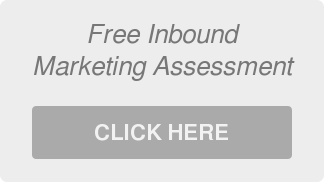 When we treat our prospects as part of a faceless mass and fail to identify them as individuals of great value our marketing becomes ineffective. If we consider the number of ads we are typically exposed to every day it numbers in the thousands. If your marketing content is not personalized for each individual prospect it will fall by the wayside and be lost in that sea of thousands of ads.
When we treat our prospects as part of a faceless mass and fail to identify them as individuals of great value our marketing becomes ineffective. If we consider the number of ads we are typically exposed to every day it numbers in the thousands. If your marketing content is not personalized for each individual prospect it will fall by the wayside and be lost in that sea of thousands of ads.
So how do you get your marketing materials to show your prospects you don't simply want the attention of people like them but that you want their individual attention? Well the answer is personalization.
What Is Personalization?
It is easy to throw around terms like personalization but what is it really and how can it help your ads stand out from your competitors? Personalization takes customer information like browsing activity, demographics, and online behaviors with automated technology that creates communications that are customized to each individual.
The “share a coke campaign” launched back in 2011 by Coca-Cola is a great example of how personalization helps your marketing efforts. Coca Cola started placing popular first names on their bottles and cans. They used the most personal thing about a human-their name. For the first time in a decade they saw their sales jump up. They were able to connect with Millennials and help them to see that Coke belonged to them-personally belonged to them. After all, their name was on the can. That degree of personalization helps a prospect identify with your brand and feel a certain familiarity with your brand. All of that translates into more sales because studies show that 75% of all consumers are more likely to buy from a retailer that knows them by name and can make recommendations and provide options based on their past purchases.
Smart Content
Using smart content is one step that helps to personalize communications with prospects. Smart content is personalization that meets a prospect at the point they are at in the buyers journey. An example of smart content is the display default text on a landing page. The default content is normally “welcome” if a person is visiting your site for the first time. Smart content would change the greeting if a prospect is returning to the site to something like welcome back, Laura. Smart content is driven by smart lists that are built from remarketing audiences and the lifecycle stages of the buyers journey. Smart list help you identify a prospect and where they are in the buyers journey. You create content that is relevant to prospects in each cycle of the buyers journey. This “customized” content is then displayed through automated technology based on which group of prospects the individual is identified to belong to.
Smart CTA's
Smart calls to action work the same way as smart content. They allow you to choose which call to action your prospect views based on specific criteria you establish. Smart CTA's are important because people have different needs and pain points. You want to provide a call to action that speaks directly to their personal need or to where they are in the buyers journey.
Interest-based Advertising
Amazon is the king of interest -based advertising. When you visit their site they make recommendations and show pages you may be interested in based on previous purchases or pages you have recently viewed. Enterprises need to pick up on interest based advertising by capturing online user activity such as sites visited and apps downloaded to get a sense of a prospects' interests. Use that information to tailor your ads for different demographic groups.




